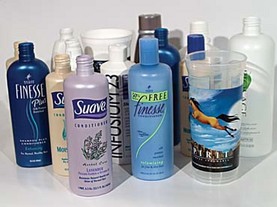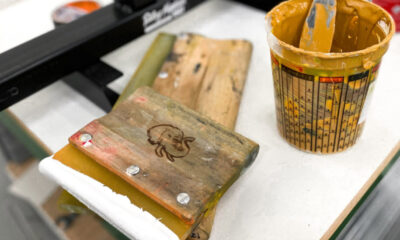UV-curable inks and coatings have been used in commercial print processes since the late 1970s, but the technology can be traced back much further to the early part of the 20th century. In fact, scientists have long known that UV radiation can promote chemical change. For instance, the success of silver-halide photography relies on this effect.
Early formulations of UV inks were often built using unstable, raw chemicals or compounds, rather than the complex, tailored, multifunctional materials available today. However, these early formulations provided the necessary impetus to drive suppliers of both printing ink and raw materials to develop better and more sophisticated UV-ink solutions.
In the last 20 years, and in the last decade in particular, ink companies have pushed the technology with a passion. The results are high-speed, low-build inks that can be applied to numerous surfaces, last very long periods outdoors, and also be stretched, formed, or otherwise processed without losing their inherent adhesion, color strength, or other physicochemical properties.
This article will examine these developments in UV technology. It will focus on the internal and external influences on the industry that have pushed ink companies to formulate and drive UV technology to applications such as P-O-P displays, automotive components, packaging and containers, CDs and DVDs and more (Figure 1).
Science and history
Our planet orbits the sun, and in turn, the sun provides for life on earth. In part, this is due to the ability of organisms on earth to convert the sun’s radiant UV energy into a fuel or use the energy to promote a biological or chemical change. The development of the physical sciences uses lessons from nature to provide solutions to a wide variety of problems. The utilization of UV energy is no exception. Scientists have long been aware of how UV radiation can be used to catalyze, or otherwise promote, a chemical reaction and have exploited this relationship in the production of many raw materials.
UV energy has also been harnessed by the medical profession to aid in curing diseases. UV light also regularly helps forensic scientists in criminal investigations. They understand that chemicals respond to

 Case Studies2 months ago
Case Studies2 months ago
 Art, Ad, or Alchemy2 months ago
Art, Ad, or Alchemy2 months ago
 Andy MacDougall2 months ago
Andy MacDougall2 months ago
 Columns3 weeks ago
Columns3 weeks ago
 Editor's Note2 weeks ago
Editor's Note2 weeks ago
 Thomas Trimingham2 months ago
Thomas Trimingham2 months ago
 Marshall Atkinson2 weeks ago
Marshall Atkinson2 weeks ago
 News & Trends1 month ago
News & Trends1 month ago








